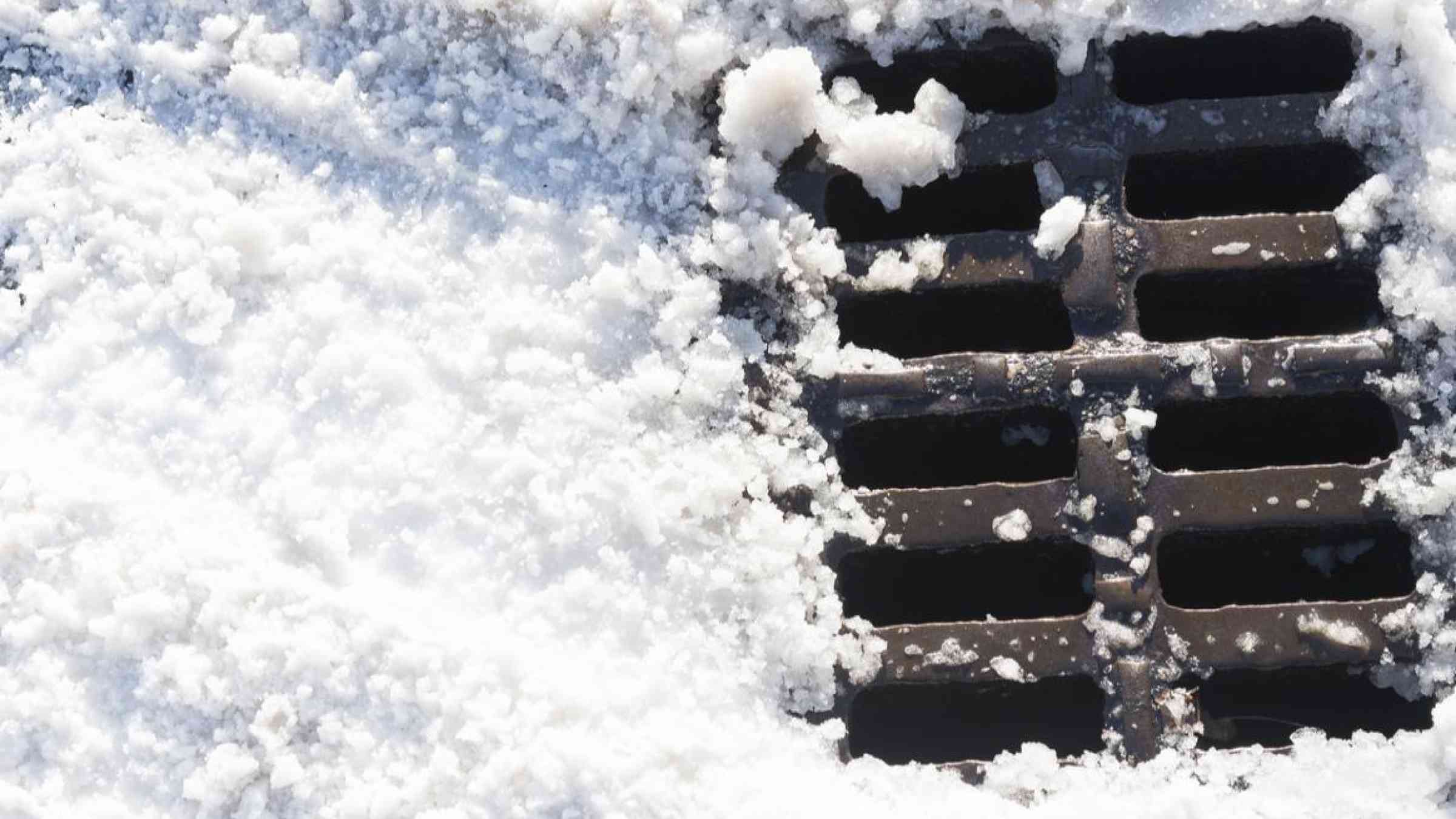How infrastructure standards miss the mark on snowmelt

By Jackie Rocheleau
California’s Oroville Dam holds back a reservoir that provides water for 23 million people. In February 2017, rainstorms doused the area and filled the reservoir beyond its normal capacity. Excess water was released through the main spillway, but the structure failed, and 188,000 people living downstream evacuated to avoid potential floods.
Several factors contributed to the spillway failure, and one of them was snow. Warm temperatures and rain melted much of the unusually deep snowpack in the Sierra Nevada mountains that winter, which ran off into the reservoir below.
“You wouldn’t have had such a severe incident if there wasn’t so much water coming into the lake that they had to let out really, really fast,” said Brian Henn, a machine learning scientist focusing on global climate models at Vulcan.
In parts of the United States, snowmelt presents a flood hazard. Although snow usually melts gradually as winter gives way to spring, if it melts rapidly because of warm spells or rain-on-snow events, the runoff into rivers can lead to severe floods. In recent years, snowmelt-driven floods have become a more urgent concern. But the national standards civil engineers use to design flood-resilient infrastructure, NOAA Atlas 14, take only liquid precipitation into account, not snowmelt.
To address this, Eunsang Cho, a postdoctoral researcher at NASA’s Goddard Space Flight Center, and Jennifer Jacobs, a civil engineering professor at the University of New Hampshire, created a map that accounts for snowmelt across the continental United States. It shows that by not including snowmelt levels, NOAA Atlas 14 might be providing civil engineers in some regions with an inaccurate idea of flood risks.
“You look at some of the more extreme melt events, and almost all of them have occurred in the last 10 years or so, which is a warning that as things get warmer, particularly in the winter, you have the potential for added hazard from snow melting fast,” said Henn. “That wasn’t a hazard that used to exist when a lot of our older infrastructure was designed.”
NOAA Atlas 14 works well for most parts of the country where snowmelt isn’t a big concern, but for regions with heavy snowpack—like the mountainous western United States, the north central United States, and the Northeast—NOAA’s values are incomplete. “That kind of information is useful, but not completely accurate,” said Lai-yung Ruby Leung, a Battelle fellow at the Pacific Northwest National Laboratory. “Flooding is not just about precipitation.” It’s also about snowmelt.
“In places where you have snowpack in the wintertime that is particularly problematic,” said Leung.
Mapping Snowmelt
Knowing the hazards posed by snowmelt-driven floods, Cho and Jacobs analyzed snow water equivalent (a measure of the amount of water contained in snowpack) and snowmelt data across the continental United States. They combined snow water equivalent (SWE) and snowmelt values with precipitation data to create design values, values used when planning infrastructure that needs to withstand extreme events, that could offer a more complete picture than NOAA’s standard design values.
To do this, they used data from a University of Arizona SWE and snowmelt product and the national Snow Data Assimilation System, or SNODAS, data set of SWE and snowmelt across the continental United States. Combining statistical and mathematical methods, Cho and Jacobs used those numbers to map annual maximum SWE and weekly snowmelt levels.
They saw that regions with high SWE and large snowmelt events were closely linked. The mountainous regions in the western United States boasted the highest extreme SWE and snowmelt values. When they compared their map of weekly snowmelt plus precipitation levels to NOAA’s precipitation atlas, they saw that in 23% of 44 states for which NOAA had the necessary data, the combined snowmelt and precipitation levels were higher than NOAA’s precipitation values.
This difference means that in those areas, mostly in western, north-central, and northeastern regions, civil engineers are designing infrastructure on the basis of precipitation values that might be too low. “Finding that a flood can be larger than what the NOAA map shows you means that you might have underdesigned your infrastructure,” said Leung.
Cho hopes that their findings can enhance current guidelines, but for the moment, the research has limited applications and doesn’t consider the changing climate. “The risk of extreme precipitation and snowmelt events is increasing as things get warmer,” said Henn. Although the current study is a good starting point, “if we’re designing based on data that might be 30 years old, it might already be out of date.”
Cho is working on that problem and currently trying to determine how climate change will influence their values. “Based on this climate issue, the standard values should be updated regularly in the future to provide the most robust guidance for engineering or water resource management,” he said.
“It’s important for us to recognize that past information is not necessarily the only information that you should use for designing your infrastructure,” said Leung. “Because things are changing.”